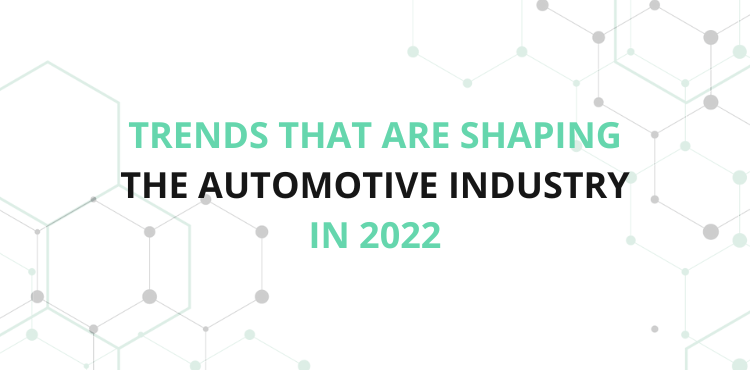When the IT and automotive industries come together, the collaboration brings some unbelievable, highly intelligent features to mankind. If four wheels and an engine are all consumers wanted, they would still opt for older generation cars. But with changing times, we need our cars to do more than just transport. And, for automakers to attract consumers, newer models need to embrace the future by utilizing advanced technologies and the Internet of Things (IoT).
Let’s look at some new trends that are shaping the automotive industry in 2022.
Autonomous vehicles
With advancing automation technology and artificial intelligence, autonomous vehicles have gained more and more popularity in the automotive industry. Despite the recent dip due to the pandemic, Statista predicts the autonomous vehicle market will grow by almost 60% by 2023. These ‘intelligent’ cars benefit both commercial drivers and commuters by assisting them with tasks like driving, braking, parking, and lane-changing. Integrating such IoT solutions into new car models is already reducing human error, leading to safer road conditions for everyone.
Vehicle telematics
Vehicle telematics allows the monitoring of the location, movement, status, and behavior of a vehicle within a fleet. With the help of telematics devices, operators can now collect large volumes of data on everything from routes and traffic conditions to fuel consumption and performance metrics. This data is then used to track vehicles in real-time, provide remote diagnostics and improve operational efficiency and driver safety. A recent report from contus.com listed the advantages of using telematics. This includes features like remote access to vehicle operation information, remote vehicle speed limit controls, turn-by-turn navigation with augmented 3rd-party information, vehicle collision notifications to third parties, and emergency responders.
Predictive maintenance
Cars manufactured with IoT capabilities come with embedded sensors that collect performance data on specific parts and transfer it to the cloud. The predictive analytics on the cloud then process this data, evaluate and assess the risks of malfunction and notify the driver of any problems and advise on potential service and repairs. Predictive maintenance can be used by both industrial and commercial consumers, whether it’s monitoring fleet performance or improving the user experience for private owners.
Connected cars or cellular vehicles
With IoT technologies, the automotive industry is creating innovative and advanced solutions, including Vehicle to Everything (V2X) communication applications. Furthermore, there are two modes of operation with V2X: device-to-device and device-to-network. Device-to-device enables communications like Vehicle-to-Vehicle (V2V)), Vehicle-to-Infrastructure (V2I), and Vehicle-to-Pedestrian (V2P). These communication platforms deal with collision avoidance, share data about speed, location, and route via a single network and alert the driver about traffic signal priority/timing, and safety alerts to pedestrians and cyclists.
Device-to-network supports Vehicle-to-Network (V2N) communication via cellular networks, allowing cloud services to include in these end-to-end solutions, as well as real-time traffic reporting and routing.



